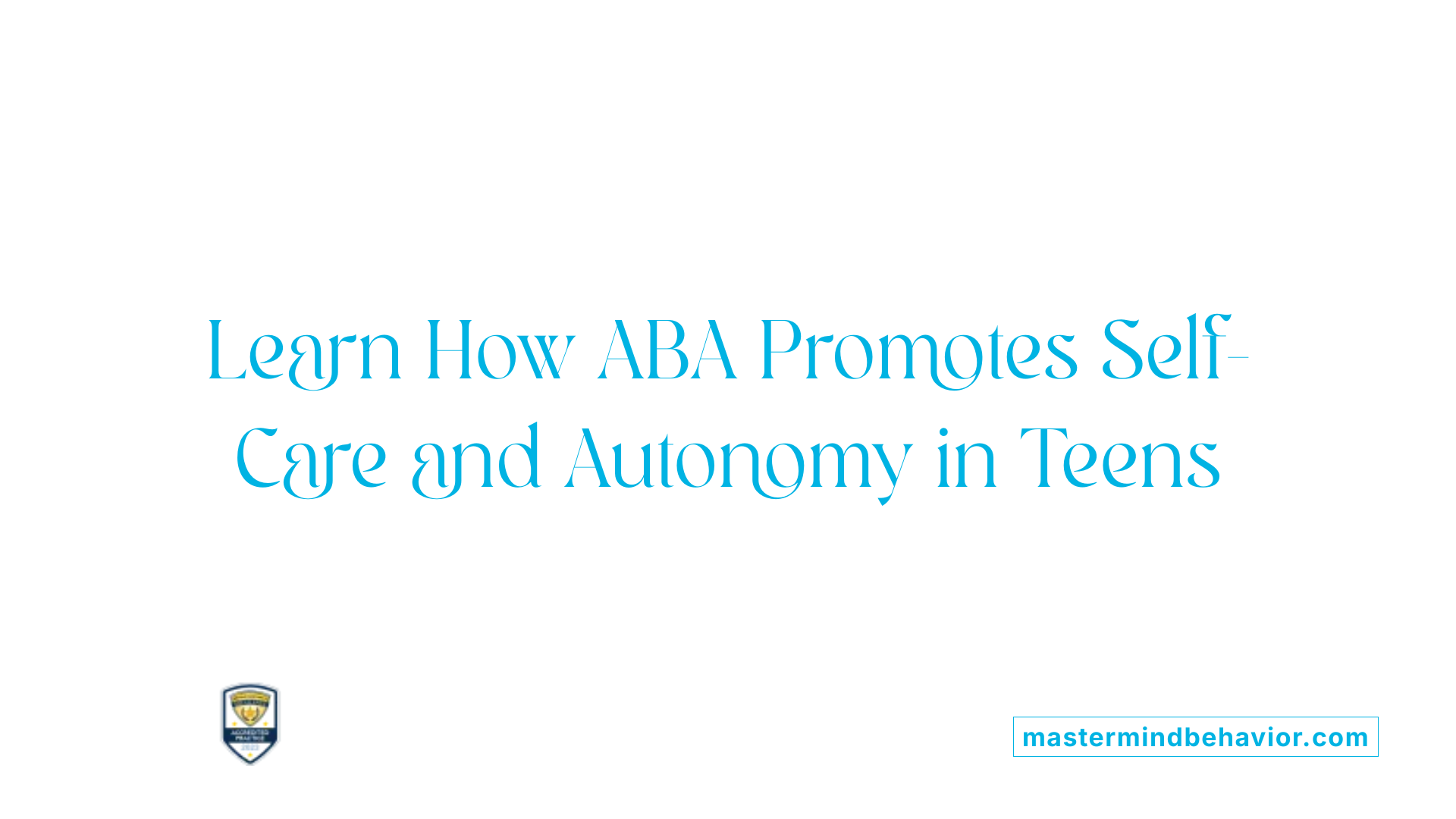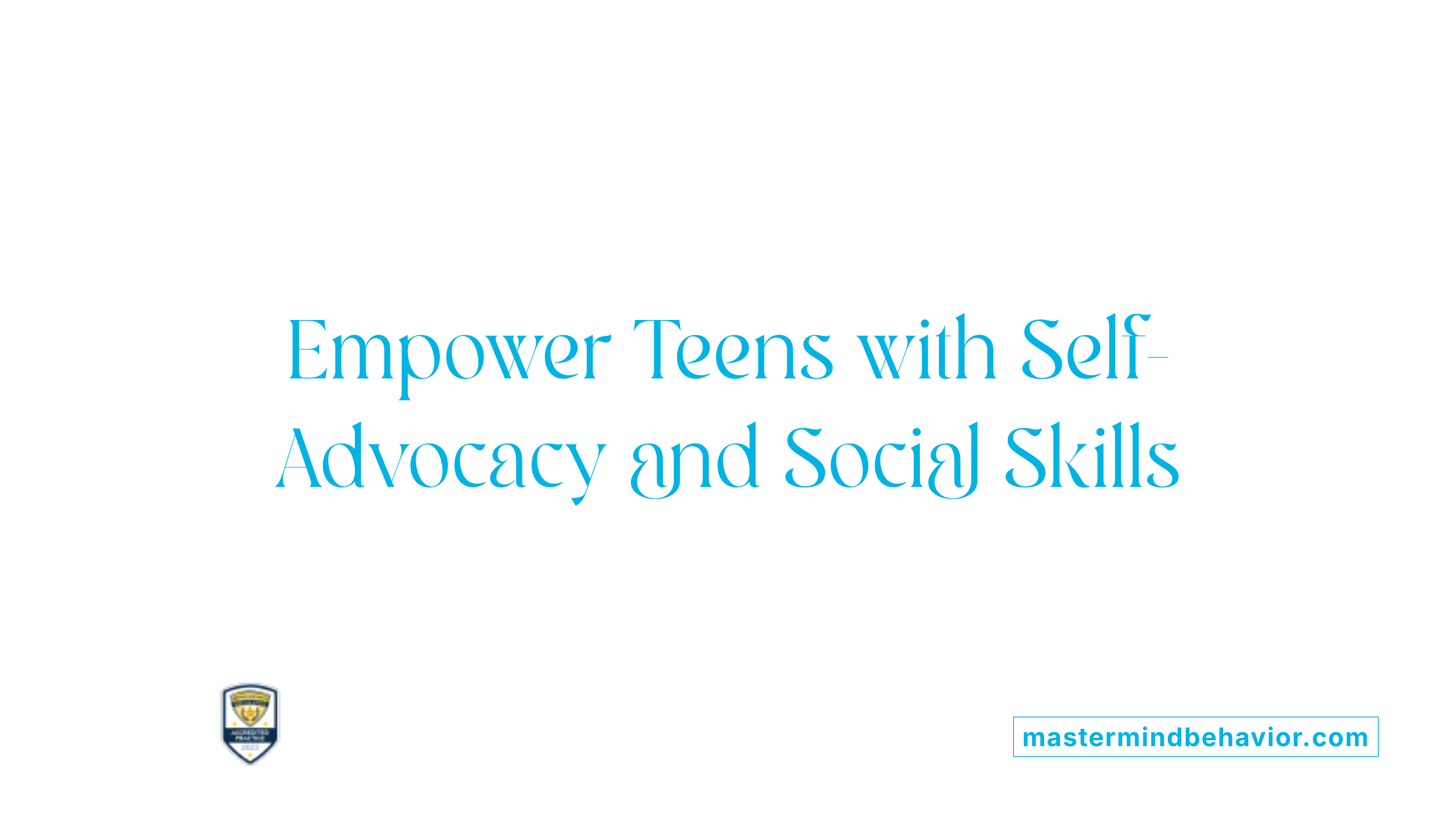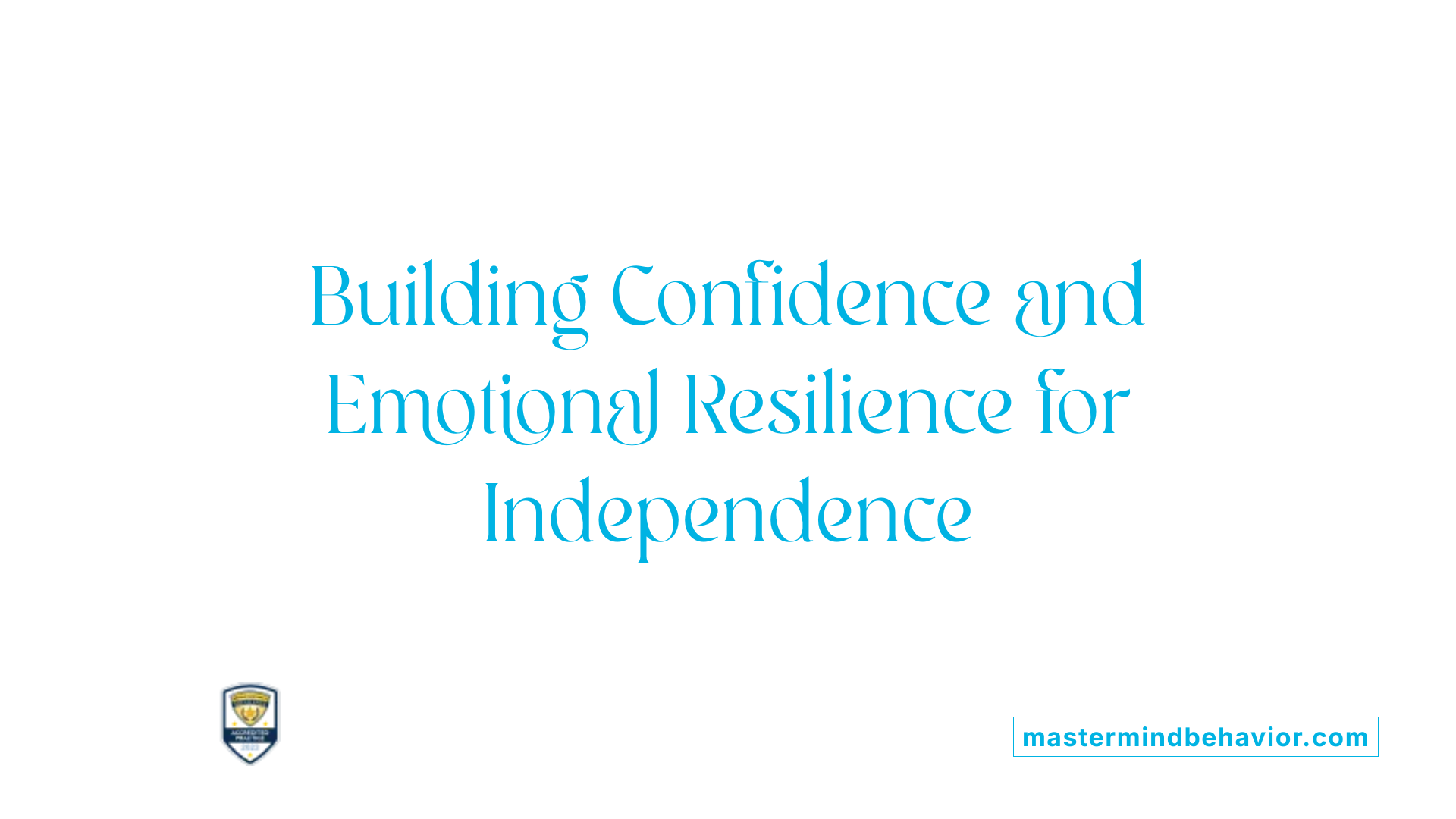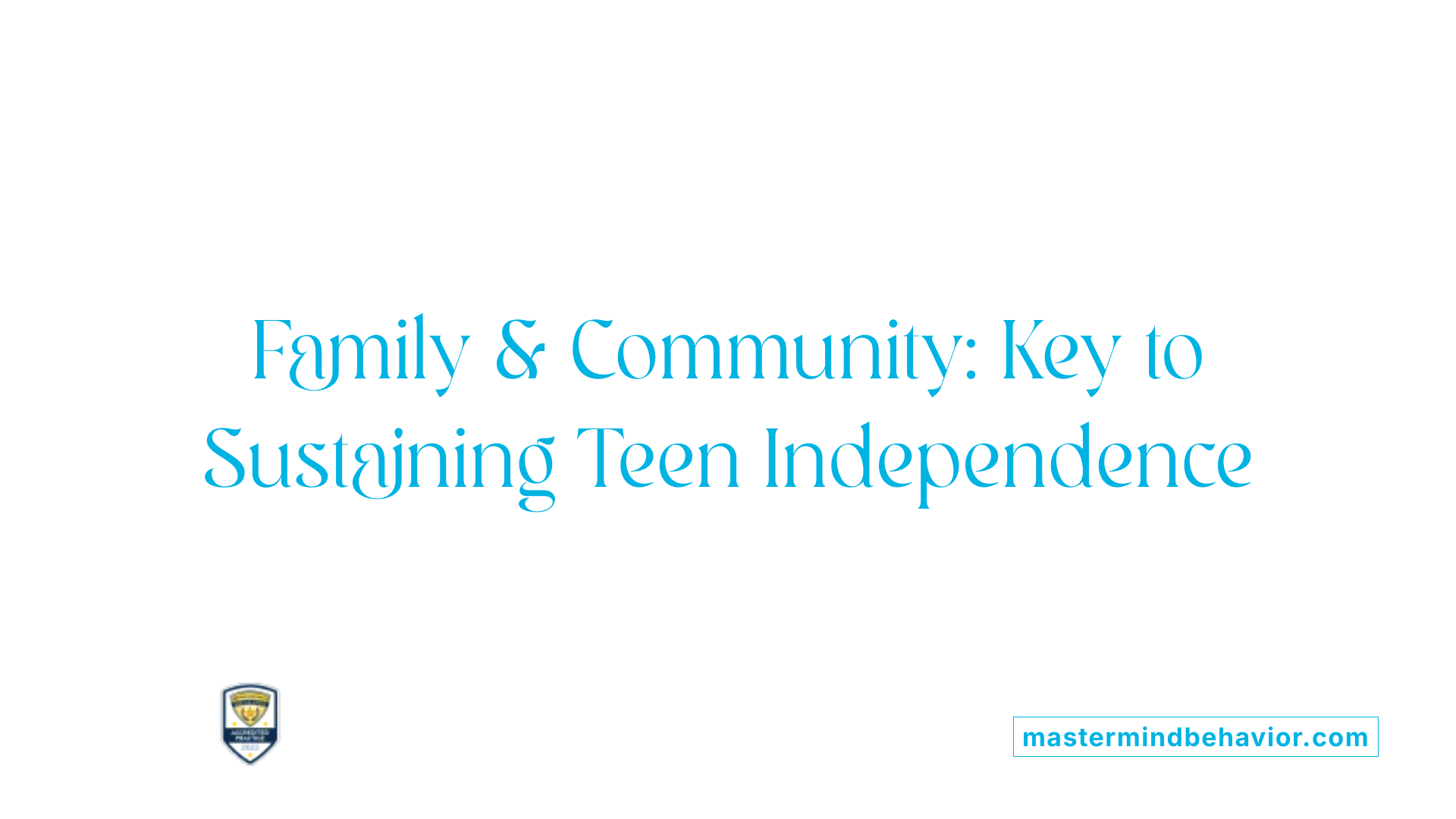How ABA Therapy Builds Self-Care Independence In Teenagers

Understanding the Impact of ABA on Teen Independence
Applied Behavior Analysis (ABA) therapy is a scientifically validated approach that plays a crucial role in fostering self-care independence among teenagers, particularly those with autism. By integrating techniques rooted in behavioral science, ABA helps teens acquire essential life skills, build confidence, and develop autonomy, preparing them for successful transitions into adulthood. This article explores how ABA therapy supports self-care, the strategies involved, and the measurable benefits observed in adolescent development.
Foundational Principles of ABA Therapy for Teen Self-Care

How does ABA therapy promote self-care independence in teenagers?
ABA therapy helps teenagers become more independent in their daily routines, such as personal hygiene, dressing, and safety procedures. It uses a structured approach that breaks down each skill into smaller, manageable steps through task analysis. For example, brushing teeth is taught by first demonstrating holding a toothbrush, then applying toothpaste, brushing, rinsing, and finally cleaning up.
Therapists incorporate prompts, such as verbal cues or visual supports, to guide the teen through each step. Over time, these prompts are gradually faded, encouraging the teen to perform the skills independently. Positive reinforcement, like praise or preferred activities, motivates the teen to repeat desired behaviors and reinforce their progress.
The therapy plan is individualized, focusing on the teen’s specific strengths and needs. Families, educators, and caregivers are involved to create consistency across settings, helping teens retain and generalize their skills. Community-based and vocational activities are also integrated, preparing teens for real-world responsibilities outside the home.
This comprehensive approach not only teaches practical skills but also fosters confidence and autonomy. By steadily building competence in essential routines, ABA therapy supports teenagers in navigating daily life more independently, ultimately fostering their successful transition into adulthood.
Step-by-Step Skill Building Through Task Analysis and Reinforcement

What methods and practical approaches in ABA therapy support self-care skill development in teens?
ABA therapy emphasizes breaking down complex routines into manageable, step-by-step procedures known as task analysis. For teens, this might involve teaching routines like brushing teeth, washing hands, or preparing a snack by first demonstrating each step clearly.
Modeling and repetition are fundamental, with therapists and caregivers showing the correct way and encouraging practice until the teen can perform independently. Visual aids, such as pictorial schedules or checklists, serve as visual prompts that guide teens through each step, making routines easier to remember and execute.
Prompting, which includes physical, verbal, or gestural cues, helps adolescents perform tasks correctly during initial learning phases. Over time, prompts are gradually faded, encouraging teens to rely more on their internal logic and visual supports.
In addition to task analysis, self-management strategies like goal setting, self-monitoring, and self-evaluation foster a sense of autonomy. Teens learn to track their progress, reward themselves for successful completion, and adjust their behaviors independently.
Natural environment teaching is employed to practice these skills across different settings, ensuring that self-care routines are relevant and sustainable in everyday life. Collaboration with parents and caregivers reinforces these skills at home, providing consistent support.
In summary, ABA's structured methods—breaking skills into steps, modeling, repetition, visual aids, and gradual fading of prompts—combined with self-management techniques and natural teaching environments, create a comprehensive approach. These strategies effectively promote teens' independence in essential self-care routines, leading to improved daily functioning and confidence.
Techniques for Enhancing Self-Care Skills and Promoting Independence
What methods and practical approaches in ABA therapy support self-care skill development in teens?
ABA therapy employs a variety of methods to help teens develop essential self-care skills and increase independence. Central to these approaches is task analysis, where complex routines such as bathing, grooming, or preparing snacks are broken down into smaller, manageable steps. This step-by-step breakdown makes it easier for teens to learn and master each component.
Prompts and positive reinforcement are used extensively to encourage correct performance. For example, a caregiver or therapist might provide physical, visual, or verbal cues to guide teens through routines, rewarding successful completion with praise or preferred activities. These reinforcement strategies motivate teens to repeat desired behaviors and build confidence.
Natural environment teaching (NET) plays a key role in making skills functional and relevant. This approach involves practicing routines in everyday settings—like the bathroom, kitchen, or during outdoor activities—so skills are more easily generalized to real-life situations.
To support ongoing independence, ABA incorporates self-management strategies. Teens are taught to set their own goals, monitor their performance, and evaluate their progress. Techniques such as self-instruction, where teens use prompts to guide their actions, and self-reinforcement, where they reward themselves for successfully completing routines, foster internal motivation and self-control.
Parents and caregivers are integral to this process. They work with professionals to create individualized plans that include visual schedules, routines, and reinforcement systems adapted to each teen’s needs. These strategies help embed self-care habits into daily life, promoting consistency and generalization.
In summary, ABA combines structured teaching methods like task analysis, prompting, and reinforcement with naturalistic and self-management techniques. Together, these approaches effectively teach teens essential self-care routines, fostering independence and improving their overall quality of life.
Behavioral Strategies for Advocacy and Social Participation

How does ABA therapy support self-advocacy and independence in teenagers?
ABA therapy plays a crucial role in helping teens with autism develop self-advocacy and independence skills. It teaches them how to clearly express their needs and preferences, which are essential components of self-advocacy. The therapy emphasizes building functional skills such as decision-making, problem-solving, and understanding social cues, enabling teens to navigate various social and daily situations more confidently.
Through personalized programs, ABA helps adolescents gain confidence and self-awareness. Techniques like role-playing and social stories simulate real-life scenarios, making teens familiar with social expectations and appropriate responses. These activities reinforce skills needed for active participation in their communities, education, and personal lives.
ABA therapy also incorporates community-based instruction, allowing teens to practice skills like ordering food at a restaurant or using public transportation in real-world settings. This approach enhances their ability to handle everyday challenges independently. Overall, ABA equips teens with the tools to become more autonomous, enabling them to advocate effectively for themselves and manage daily routines with greater confidence.
Developing Social and Emotional Skills to Promote Autonomy

How effective is ABA therapy in enhancing independence and social skills in teenagers with autism?
Research consistently shows that ABA therapy is highly successful in helping teenagers with autism develop important life skills. It uses structured methods like task analysis, positive reinforcement, and visual supports to teach routines such as self-care, household responsibilities, and social interactions.
In terms of social and communication skills, ABA programs often incorporate role-play, natural environment teaching, and peer interactions. These techniques help teens understand social cues, engage with others confidently, and express their needs effectively.
For emotion regulation, ABA uses strategies such as recognizing emotional states, practicing calming techniques, and managing stress through targeted interventions. This helps teens handle emotional challenges and build resilience.
Confidence is boosted through repeated practice, successful experiences, and positive reinforcement. As teens master these skills, they become more independent and are able to navigate everyday situations more successfully.
| Outcome Area | Techniques Used | Expected Benefits | Additional Notes |
|---|---|---|---|
| Social Skills | Role-playing, peer modeling, social stories | Better peer interactions, social understanding | Promotes confident social engagement |
| Communication | Functional Communication Training, visual supports | Clearer expression of needs, reduced frustrations | Supports verbal and non-verbal communication skills |
| Emotional Regulation | Recognizing emotions, relaxation training | Improved stress management, emotional stability | Tailored to individual teen needs |
| Independence Skills | Task analysis, reinforcement, structured routines | Increased self-sufficiency in daily life | Integral to overall autonomy development |
How does ABA therapy support long-term independence in adolescents?
Data shows that about 80-90% of children and youth with ASD see notable improvements through ABA therapy. It helps teens learn daily routines such as hygiene, time management, and community participation. Programs are personalized, assessing strengths and challenges to set clear, measurable goals.
Parental involvement and community-based instruction reinforce skills across settings. Over time, teens become capable of managing daily tasks independently, advocating for themselves, and transitioning into post-secondary education or vocational settings.
| Focus Area | Techniques & Tools | Typical Goals | Benefits |
|---|---|---|---|
| Daily Living Skills | Visual schedules, task breakdowns, reinforcement | Independence with self-care, household chores, routines | Greater autonomy and confidence |
| Social and Community | Role-play, community outings, social stories | Navigating social situations, public transport, ordering food | Improved social integration |
| Vocational Skills | Job simulations, real-world tasks, decision-making | Job readiness, workplace independence | Better integration into community and workforce |
Why is caregiver involvement crucial in ABA therapy?
Parents play a central role in encouraging skill development at home. Many programs offer online training to help caregivers implement consistent reinforcement, structured routines, and communication strategies. When parents are active participants, children are more likely to generalize and retain their new skills.
Overall, ABA therapy provides a comprehensive approach to supporting adolescent independence and social skills. By focusing on personal strengths, real-world application, and ongoing assessment, the therapy prepares teens for successful and confident futures.
The Role of Family and Community in Supporting Independence

How does ABA therapy support self-advocacy and independence in teenagers?
ABA therapy plays a crucial role in empowering teenagers with autism to advocate for themselves and become more independent. It achieves this by teaching essential communication skills, enabling teens to express their needs and preferences clearly, which is vital for effective self-advocacy.
The therapy also emphasizes developing practical skills such as decision-making and problem-solving within structured environments. Through individualized programs, teens learn to interpret social cues, navigate social interactions, and handle daily routines confidently.
Practical applications include role-playing scenarios that simulate real-life situations, like asking for help or making choices about activities. These exercises help build self-confidence and understanding of social expectations.
Overall, ABA therapy fosters greater autonomy by enhancing teens' ability to make informed decisions, solve problems, and communicate effectively. This foundation supports them in managing daily activities independently and participating actively in social and educational settings.
Fostering Lifelong Independence
ABA therapy is a comprehensive and effective approach to developing self-care independence among teenagers with autism. By utilizing structured, personalized strategies that incorporate behavioral principles and naturalistic teaching, ABA empowers teens to acquire vital life skills, enhance social and emotional competence, and advocate for themselves confidently. When families, educators, and community resources collaborate to reinforce these skills, teens are better prepared for independent living, education, and social participation, ultimately fostering lifelong autonomy and success.
References
- How ABA Helps Build Independence In Children And Teens
- How ABA Therapy Build Independences in Daily Routines
- Understanding ABA Therapy for Autistic Teens
- ABA & Self-Advocacy for Teens
- ABA Therapy for Teens
- Promoting Independence in a Child with Autism
- Ways ABA Enhances Health and Independence for Autistic ...
Recent articles

Finding Support: Financial Aid And Insurance Advocacy For ABA Therapy
Navigating Financial and Insurance Support for ABA Therapy

The Importance Of Reinforcement Diversity In ABA Programs
Enhancing ABA Therapy Through Varied Reinforcement Approaches

How ABA Therapy Encourages Self-Expression Through Communication
Unlocking Voices: The Role of ABA Therapy in Enhancing Communication for Autism

How ABA Therapy Reduces Inflexible Behavior Patterns
Unlocking Flexibility: The Transformative Impact of ABA Therapy on Autism Behaviors

How ABA Therapy Improves Tolerance To Sensory Experiences
Unlocking Comfort: The Role of ABA Therapy in Sensory Integration for Autism

What Makes In-Home ABA Therapy Different From Clinic-Based ABA
Exploring the Distinctive Features of In-Home and Clinic-Based ABA Therapy



